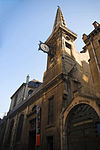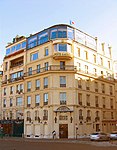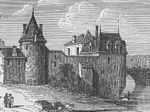Île Saint-Louis
4th arrondissement of ParisTourist attractions in ParisÎle Saint-Louis

Île Saint-Louis (French: [il sɛ̃ lwi]), eleven hectares (27 acres) in size, is one of two natural islands in the Seine river, in Paris, France (the other natural island is the Île de la Cité, where Notre-Dame de Paris is located). Île Saint-Louis is connected to the rest of Paris by four bridges to both banks of the river and to the Île de la Cité by the Pont Saint-Louis.The island is located within the 4th arrondissement of Paris and has a population of 4,453.
Excerpt from the Wikipedia article Île Saint-Louis (License: CC BY-SA 3.0, Authors, Images).Île Saint-Louis
Rue des Deux Ponts, Paris 4th Arrondissement (Paris)
Geographical coordinates (GPS) Address Nearby Places Show on map
Geographical coordinates (GPS)
| Latitude | Longitude |
|---|---|
| N 48.851666666667 ° | E 2.3563888888889 ° |
Address
Île Saint-Louis
Rue des Deux Ponts
75004 Paris, 4th Arrondissement (Paris)
Ile-de-France, France
Open on Google Maps










